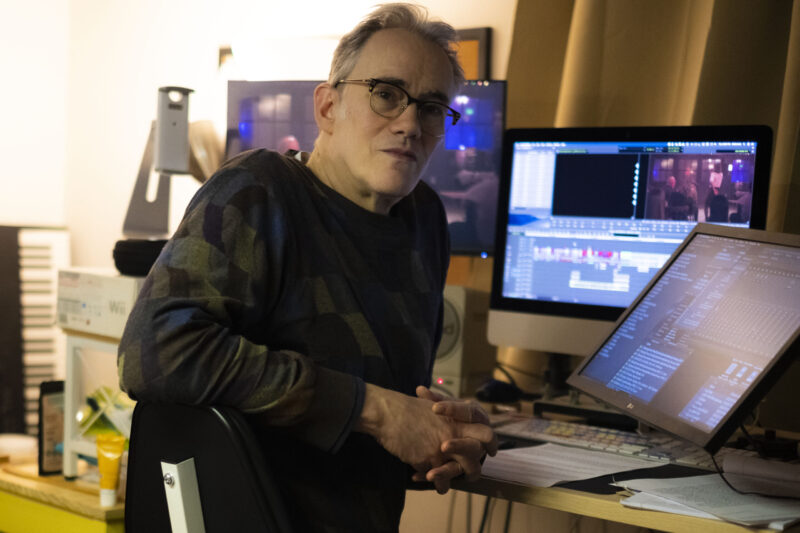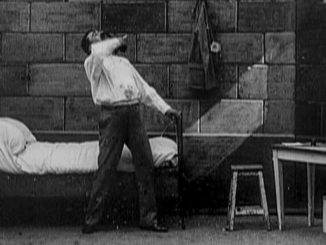
By Oliver Webb
Daniel A. Valverde, ACE, has been editing long enough to know it isn’t all about the art.
“Part of the trick of being an editor involves the politics of being a good soldier while also doing your best to protect the integrity of the cut and doing what you know will work. It’s a tricky balance that I wrestle with every single day,” he said.
After studying at The American Film Institute, Valverde served as assistant editor on “Beverly Hills, 90210” (1990-91) and “Of Mice and Men” (1992). He has since edited acclaimed series including “Dawson’s Creek,” “The Americans” and “Godfather of Harlem.”
Valverde cut three episodes of the Amazon series “Dead Ringers,” a gender-reversed remake of the 1988 David Cronenberg film streaming now. The series follows gynecologist Mantle twins Beverly and Elliot (portrayed by Rachel Weisz) as they seek funding for their new controversial birthing center.
CineMontage: How did you first get involved with ‘Dead Ringers’?
Valverde: My agent put me up for the show and I had an interview with Sean Durkin and Alice Birch. I instinctively liked Sean and his creativity and his openness. In the interview, I remember saying to him that I was always happy to show a work in progress, but not on the day that I’ve put it together because I like to look at it a day later in case I’ve done a terrible job. He understood that. He wanted people to feel free to do anything and to be terrible if need be. I really appreciated that.
I like to experiment when I’m cutting. I’ll look at my experiments a day later and sometimes I’ll be pleased, but just as often I’ll recut it to what I know works. Sean supported that kind of thinking. I was pleased with the series overall and I believe the final version pleased both Alice and Amazon.

CineMontage: What concerns were there about the editing process?
Valverde: The main concern was about pace, which I understand because the way it was originally shot, there was a tendency to want to play things out in unbroken shots as much as possible, which was part of Sean Durkin’s style. It worked brilliantly for some scenes but not for others. Also, Amazon wasn’t satisfied with the first two episodes and the decision was eventually made to combine them.
It was a long project and I wasn’t there to see through the final changes of my episodes, so there is an additional editor credited. I take my hat off to Affonso Gonçalves. He did a terrific job on all the episodes he worked on. I thought his work was very discreet, but also kind of potent. I’m sure Alice and Rachel were very involved, but I appreciated the execution quite a bit.
CineMontage: What was the most challenging sequence to put together?
Valverde: I would say that the final episode was challenging throughout because we were constantly layering and intercutting. Rachel was inspired by Nicolas Roeg and she liked the idea of trying to push the envelope on the cutting in that episode. Rachel and Alice initially felt that because Beverly is so contained, it was hard to follow her initial breakdown. The first stage was adding the flash cuts, and we peppered the entire show with the flash cuts.
I consider the dinner sequence in episode four a career achievement. Everyone is talking at the same time and there are all these different stories to keep alive. On top of that, there are moments without dialogue going on within the sequence. You have Tom staring down thepolitician, the moments where Genevieve is pressing Elliot for what she meant earlier, and just the chaos of it all. I felt very pleased that I could keep the stories understandable and also have the kind of chaos that Alice had indicated in the writing. That scene in particular was one I felt particularly proud of.
CineMontage: What was it like working with two Rachel Weisz performances?
Valverde: I am still in such awe. If you look at Beverly, her face is always placid and contained, but if you look at Elliot, there’s always so much going on. Their faces just look different. Even when Elliot puts her hair up, like at the very end before she performs the caesarean on her sister, she doesn’t look like Beverly. We’ve all seen a number of shows with twins played by the same actor, but I’ve never seen someone do it in such depth before.
CineMontage: Could you discuss the twinning process in post-production?
Valverde: We had a brilliant visual effects producer, Eric Pascarelli, who worked all of this out. Kitty Hawthorne was Rachel’s acting double. She played against Rachel in every scene. When Rachel played Elliot, Kitty played Beverly and vice versa. We would typically have four or five takes of the master. The director would always choose a ‘hero’ master because you had to do the twinning to a specified take so the computer-controlled camera could match the camera move. For example, in the opening shot of episode two, you see Beverly lying on a table. We begin on her face, and then the camera tilts all the way down to her feet and reveals an upside-down Elliot. Of course, it was Kitty in the dailies playing Elliot in that master. They would then repeat the same camera move, but Kitty would be lying on the table and Rachel would play Elliot. In this case I could choose any Elliot take I wanted, but I was married to the ‘hero’ Beverly take. Occasionally, if the camera was locked down, there was more than one take that could be a hero take. I might try and build a sequence with an alternate take in those cases, but I usually stuck to the hero takes because Sean has great taste and chose the best performance.
CineMontage: How did you and the team integrate sound to boost the story?
Valverde: I typically will do a lot of sound design in my cut. However, our sound editors and mixer were terrific, and they improved considerably on what I did. I created a sound to play under the flash cuts in the final episode, and it worked decently well, but our sound editors created something much better. I noticed that the first time you hear the off-screen voice of Elliot calling out to Beverly in the final episode, Elliot’s voice is played as through a telephone. That was an Alice choice and I thought that was interesting.
Oliver Webb is a freelance writer based in United Kingdom.





